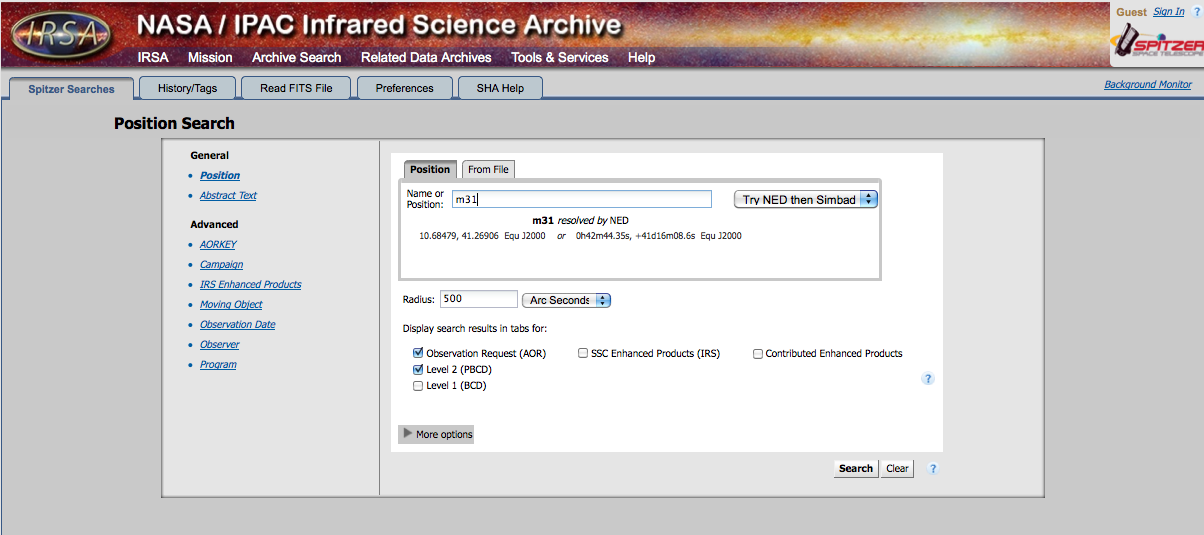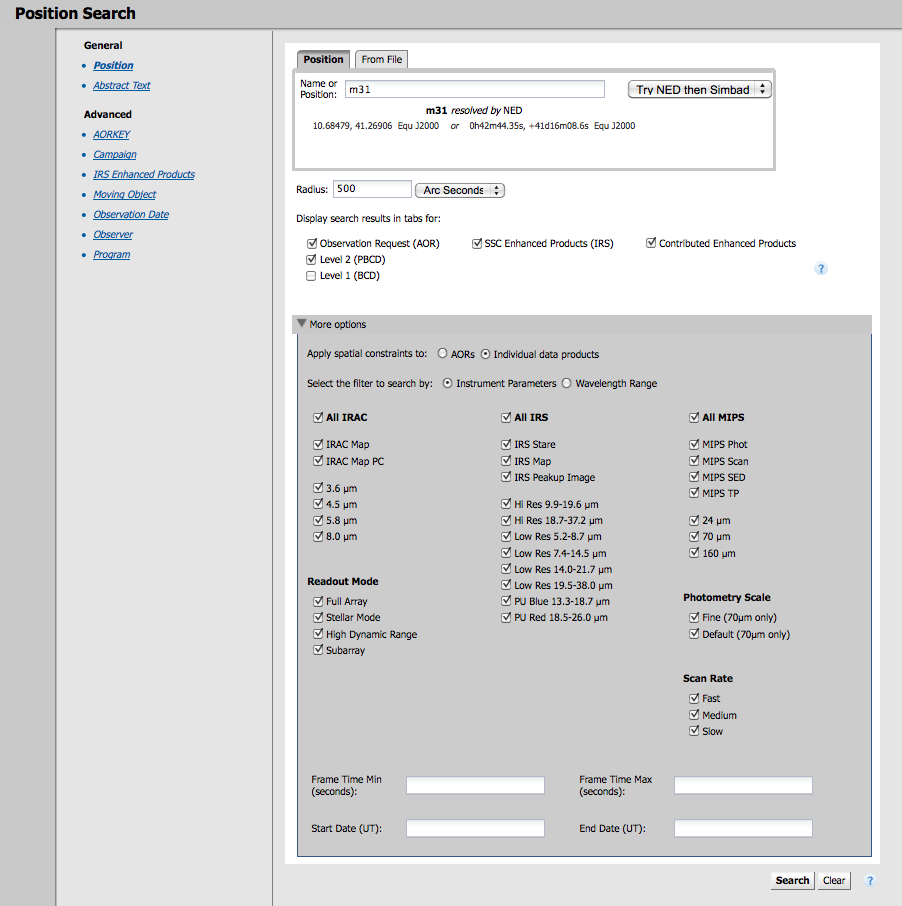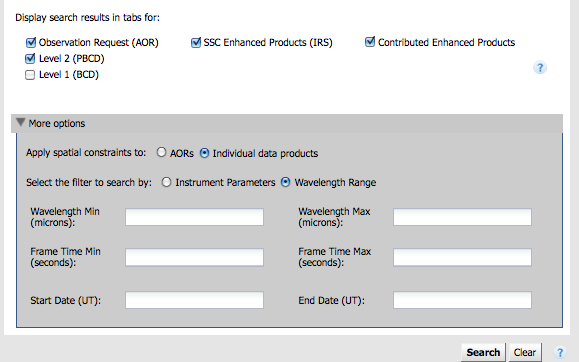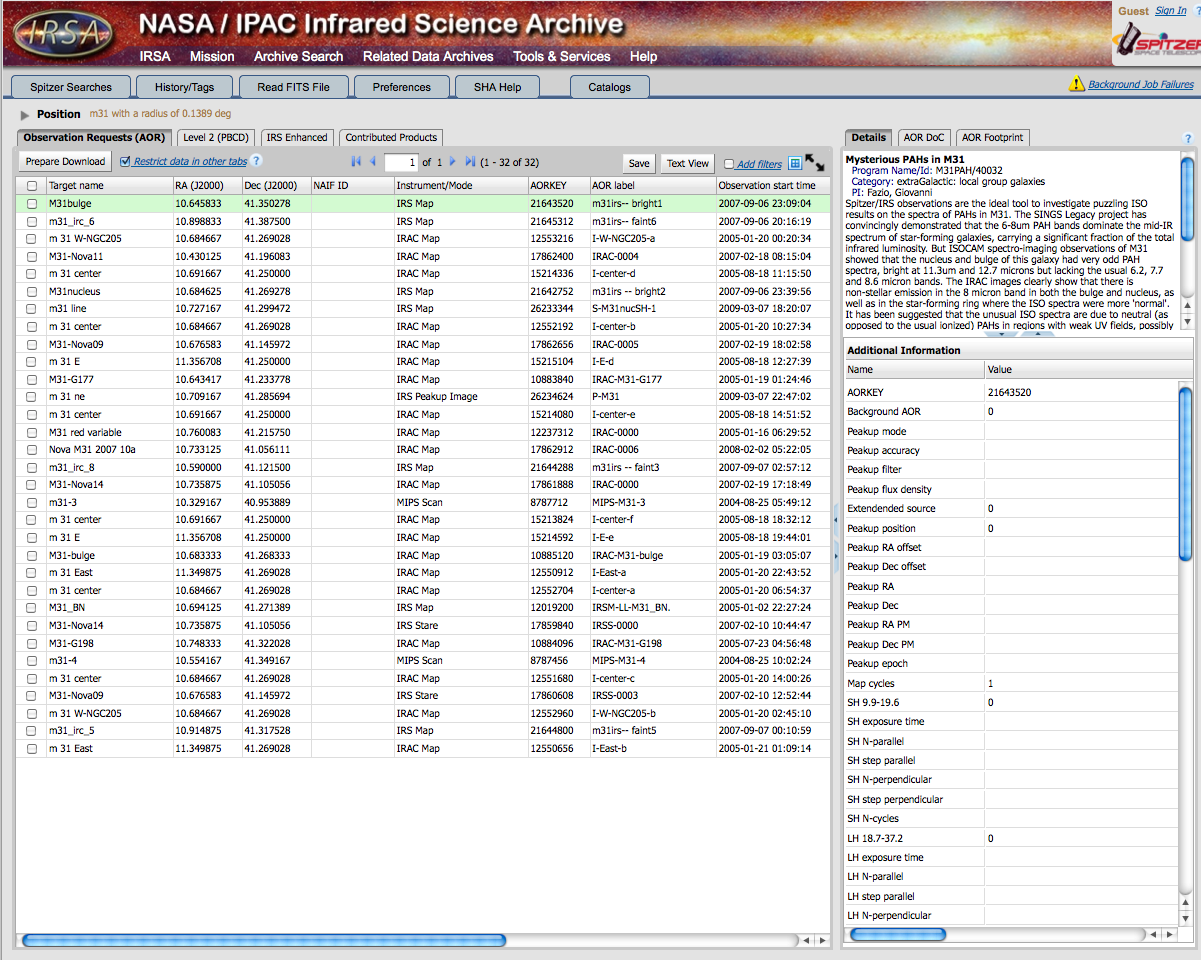Difference between revisions of "Using the SHA, long version"
(Created page with '==Simplest Search== 1. Go to the SHA: http://irsa.ipac.caltech.edu/applications/Spitzer/SHA/ 2. Click on "Search the Heritage Archive." 3. You are dropped into a "postion sear…') |
|||
| Line 1: | Line 1: | ||
| − | + | =Simplest Search= | |
1. Go to the SHA: http://irsa.ipac.caltech.edu/applications/Spitzer/SHA/ | 1. Go to the SHA: http://irsa.ipac.caltech.edu/applications/Spitzer/SHA/ | ||
| Line 11: | Line 11: | ||
4. Now, you can just hit search. | 4. Now, you can just hit search. | ||
| − | + | =Refining your search= | |
5. Maybe you want to customize things further. The additional options, as seen in the box above, are: | 5. Maybe you want to customize things further. The additional options, as seen in the box above, are: | ||
| Line 28: | Line 28: | ||
8. NOW, click "search." | 8. NOW, click "search." | ||
| − | + | =Understanding your results -- the anatomy of the search results page= | |
This is what I see after a generic search for all M31 data: | This is what I see after a generic search for all M31 data: | ||
Revision as of 19:39, 3 May 2010
Simplest Search
1. Go to the SHA: http://irsa.ipac.caltech.edu/applications/Spitzer/SHA/
2. Click on "Search the Heritage Archive."
3. You are dropped into a "postion search." (There are other search options on the left.) Type in the name of an object you care about. The machine will automatically resolve the name, e.g., turn the name into coordinates. You can choose which service does this name resolution - NED or SIMBAD. If you have something extragalactic, NED is better; if you have something else, SIMBAD works better.
4. Now, you can just hit search.
Refining your search
5. Maybe you want to customize things further. The additional options, as seen in the box above, are:
- search radius -- change the units, type in the number you want.
- apply spatial constraints -- do you want it to return whole AORs, or just the region within your search radius?
- display search results -- which data products do you want? That's important. Let me repeat that, in bold: which data products do you want? Look above, under "Basic Terminology." In all liklihood, you want the AORs and the Level 2 (post-BCD) data. In my picture above, I also have Level 1 (BCD) checked, but that's me. :)
6. Now, again, even from here, it's just fine to hit search. BUT, maybe you want to customize things even further! Click on the little "More options" line to reveal, well, more options:
7. Maybe you are only interested in IRAC data? Or just MIPS-24 data? Pick which you want. The default is to return everything. If you want to, e.g., turn off all IRS search results, click on the checkbox next to "All IRS." (And similarly for the other instruments.) If you want to search by wavelength instead (maybe you don't remember which channel is which on IRAC), you can also search by wavelength:
8. NOW, click "search."
Understanding your results -- the anatomy of the search results page
This is what I see after a generic search for all M31 data:
Let's examine the anatomy of this page.
The online help is on the top right, at the end of the red menu bar. Pick 'Spitzer help' for the right help. There's an option there for K-12 teachers and NITARP, but right now it just points back to our pages about NITARP, not more information specifically targeted at you guys. Sorry!
The yellow bar is your (collapsed) search pane. To search again, click on it, and it will expand.
The main part of this window is your search results.
On the left there are individual itemized results. On the right is the "Details Pane", the contents of which changes according to what you have selected in the individual itemized results.
On the left are three tabs in my example, but the number and content of tabs corresponds to what you have selected for your download. Here are my three tabs:
I have tabs that read: "Observation Requests (AOR)" (AORs are Astronomical Observation Requests, e.g. the fundamental unit of Spitzer observing), "Level 2 (PBCD)" (PBCD=Post-Basic Data Products -- products that come from combining individual frames, e.g., mosaics), and "Level 1 (BCD)" (BCD= Basic Data Products -- individual frames from the observations).
As NITARP users, your first stop should be the AOR tab, because this is a high-level summary of the observations. After you pick which observations you want, then you want the Level 2 tab to get the mosaics (and associated files).




